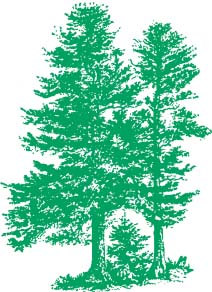Global Warming Pushing Birds Hundreds of Miles North
11 February 2009
A new study by the National Audubon Society finds that most birds in North America are migrating northward because of global warming.
Global warming is causing measurable disturbance to North American birds, with the warming climate forcing some birds up to 300 miles farther north than just 40 years ago, according to an Audubon Society study released this week.
The report's conclusion: The U.S. needs "dramatic policy changes to combat pervasive ecological disruption."
The report's data was gathered over decades by countless individuals through a citizen science project, the Christmas Bird Count. Here's a look at some of its findings:
* Of 305 species studied, 58% spend winters further north.
* 70% of common bird feeder and forest birds shifted their ranges north.
* Grassland birds, like the Eastern Meadowlark, Vesper Sparrow, and Burrowing Owl, were less likely to move northward, probably because they lack contiguous habitat to venture toward. Their fate will mirror other less-mobile species, like amphibians.
* The average northward migration among all species is 35 miles.
* Three species to move the farthest are the Purple Finch, Pine Siskin and Boreal Chickadee, which have "retreated dramatically north into the Canadian Boreal, their ranges moving an estimated 313, 246, and 211 miles respectively over 40 years."
* Waterfowl like Red-breasted Merganser, Ring-necked Duck, and American Black Duck, have shifted northward from southern-tier U.S. states by an estimated 244, 169, and 141 miles, respectively.
The study is only the latest research to point to series, real-time ecological changes happening because of global warming. We typically point to the Arctic, where melting ice provides a dramatic example of global warming, or summer heat and wildfire stress ... but the ravages of climate change are both more subtle and more profound. As birds and other wildlife shift their ranges northward in search of suitable habitat, and those very habitats shift, many species will go extinct as ecological systems shift in ways that make life untenable for species. Those living high on mountaintops are obvious examples: As the climate warms, there's no place to migrate once the top of a mountain is reached. For other species, the barrier to migration may be more subtle, and in many cases the barrier will be human development, as roads and cities prevent the northward migration of land-based species.
In that respect, the Audubon report is less dramatic than it seems: Migratory birds, of all living things (other than insects) are the most mobile and most likely to adopt new habitats as conditions on the ground shift. If even they are imperiled, what of other living things?
The Audubon Society is using its report to argue for national policies that will halve oil dependence, reduce greenhouse gas emissions and invest in renewable energy technologies. It is asking supporters to sign a petition at www.birdsandclimate.org.
What You Can Do to Help the Birds
You can help scientists track the health of bird populations by joining the Great Backyard Bird Count, starting Friday.
And you can do more:
The big choices involve use of wood-based products and meat, since the loss of forests in the Canadian boreal, where many paper products originate, and rainforests of Central and South America, where a lot of beef cattle is raised, are important reasons for the loss of birds. Use less paper, eat less meat. When buying paper and wood products, look for 100% post-consumer recycled content, and products certified by the Rainforest Alliance, the Forest Stewardship Council or other reputable third-party certifiers.
Then, turn your attention to your own backyard. Stop using pesticides and start choosing native plants that attract and feed birds, butterflies and other wildlife. The National Wildlife Federation and the Audubon Society have excellent resources for improving your backyard habitat. Look to The Daily Green in March, when it will partner with the Audubon Society to publish simple tips you can use to improve backyard habitat and otherwise help the birds.
Of course, reducing your contribution to global warming is also an important part of helping the birds, as the new Audubon study shows. For tips about what you can do to reduce your environmental impact, see 15 Green Resolutions from the NRDC.
Find this article at: http://www.thedailygreen.com/environmental-news/latest/global-warming-birds-47021101
